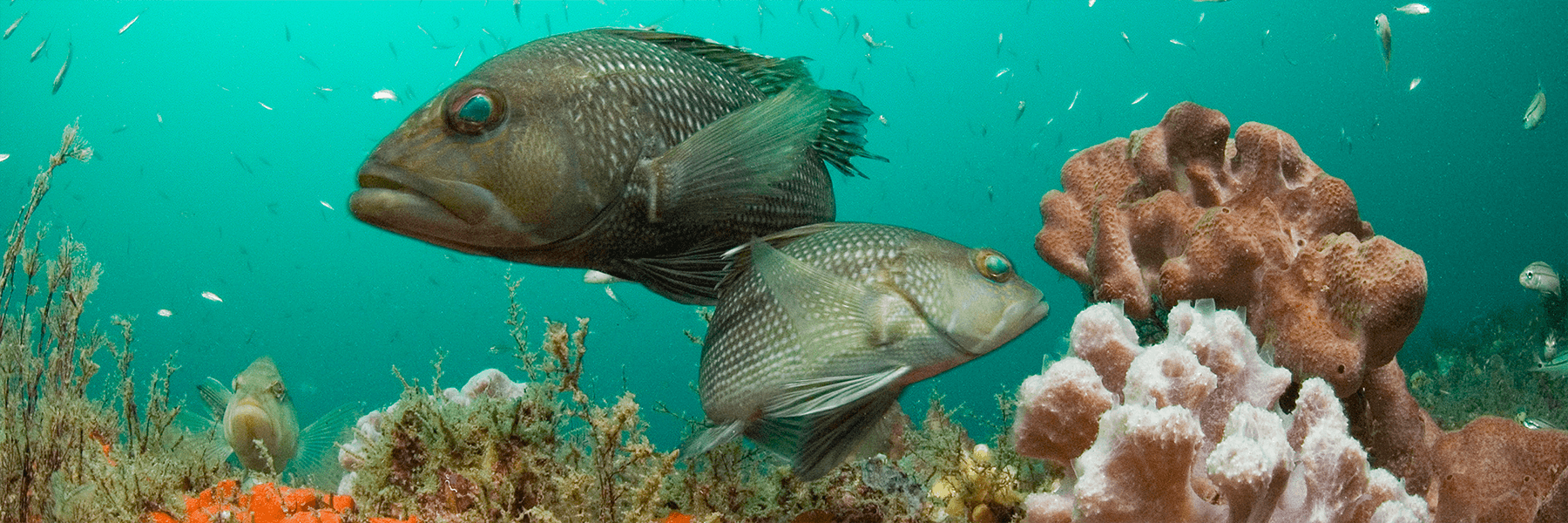Examining Potential Impact of Future Sea Surface Temperature Increases on Large Marine Ecosystems

Increasing greenhouse gases will have a significant impact on the ocean during the 21st century. Most previous studies on this topic have examined long-term changes in the average ocean state. In a new study to be published in Elementa, NOAA and CIRES researchers at the ESRL Physical Sciences Laboratory and collaborators used climate model simulations to examine changes in the average, variability and extreme sea surface temperature (SSTs)—a key variable for both climate and marine ecosystems—over the course of the seasons.
The researchers focused on coastal regions, called Large Marine Ecosystems, where the most productive fisheries are located. Their findings show strong increases in SST, which tended to be larger in summer than in winter. SST changes by the end of the 21st century result in a substantial increase in warm extremes and decrease in cold extremes. The shift in the average is so large that in many coastal regions SSTs during the future period (2070–2099) will always be warmer than the warmest year during the historical period (1976–2005). This projected transition to much warmer conditions by the end of this century will likely have profound implications for marine ecosystems. For example, temperatures in the Gulf of Maine could become more like those near the New York Bight today, and SSTs along the U.S. west coast near the Canadian border could be more like those near central California.
This study finds that SST changes by the end of the 21st century will be primarily due to a positive shift in the mean, causing a large increase in warm extremes and a decrease in cold extremes relative to the historical period (1976–2005). These SST trends are generally stronger in summer than in winter, as greenhouse gas heating is integrated over a much shallower surface layer in summer, amplifying the seasonal cycle of SST.
The overall warming of SSTs and extremes could result in the poleward migration of some fish species, which has already been documented in North American and European marine ecosystems, leading to profound changes in the structure of marine ecosystems. As the growth and reproduction of many species depends on their thermal tolerances, extreme temperatures, especially in summer, could have a substantial impact on fish population dynamics and biodiversity.
Authors of "Projected sea surface temperatures over the 21st century: Changes in the mean, variability and extremes for large marine ecosystem regions of Northern Oceans" are: Michael Alexander and James Scott of ESRL PSL, Kevin Friedland, Katherine Mills, Janet Nye, Andrew Pershing, and Andrew Thomas.
Increasing greenhouse gases will have a significant impact on the ocean during the 21st century. Most previous studies on this topic have examined long-term changes in the average ocean state. In a new study to be published in Elementa, NOAA and CIRES researchers at the ESRL Physical Sciences Laboratory and collaborators used climate model simulations to examine changes in the average, variability and extreme sea surface temperature (SSTs)—a key variable for both climate and marine ecosystems—over the course of the seasons.
The researchers focused on coastal regions, called Large Marine Ecosystems, where the most productive fisheries are located. Their findings show strong increases in SST, which tended to be larger in summer than in winter. SST changes by the end of the 21st century result in a substantial increase in warm extremes and decrease in cold extremes. The shift in the average is so large that in many coastal regions SSTs during the future period (2070–2099) will always be warmer than the warmest year during the historical period (1976–2005). This projected transition to much warmer conditions by the end of this century will likely have profound implications for marine ecosystems. For example, temperatures in the Gulf of Maine could become more like those near the New York Bight today, and SSTs along the U.S. west coast near the Canadian border could be more like those near central California.
This study finds that SST changes by the end of the 21st century will be primarily due to a positive shift in the mean, causing a large increase in warm extremes and a decrease in cold extremes relative to the historical period (1976–2005). These SST trends are generally stronger in summer than in winter, as greenhouse gas heating is integrated over a much shallower surface layer in summer, amplifying the seasonal cycle of SST.
The overall warming of SSTs and extremes could result in the poleward migration of some fish species, which has already been documented in North American and European marine ecosystems, leading to profound changes in the structure of marine ecosystems. As the growth and reproduction of many species depends on their thermal tolerances, extreme temperatures, especially in summer, could have a substantial impact on fish population dynamics and biodiversity.
Authors of "Projected sea surface temperatures over the 21st century: Changes in the mean, variability and extremes for large marine ecosystem regions of Northern Oceans" are: Michael Alexander and James Scott of ESRL PSL, Kevin Friedland, Katherine Mills, Janet Nye, Andrew Pershing, and Andrew Thomas.